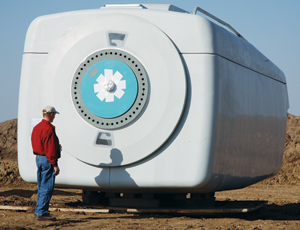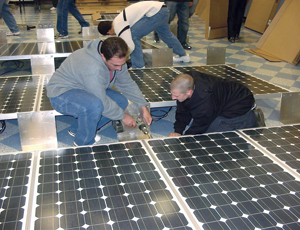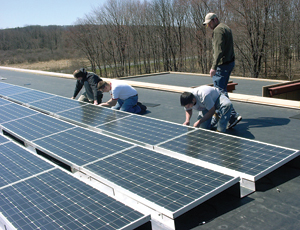The push for alternative energy projects across North America is turning the electrical workers’ union “green” with desire for new federal funding to expand apprentice and journeyman worker training in installing everything from photovoltaic roofs and giant wind turbines to nuclear power reactors.



Such training is not new for the joint apprenticeship and training committee (JATC) of the International Brotherhood of Electrical Workers (IBEW) and the National Electrical Contractors Association (NECA), which jointly fund union training in the U.S. and Canada, but demand for graduates is increasing as renewable energy and energy efficiency enjoy new cachet in the Obama administration.
“We have been training electrical workers for green jobs for years, but they have only been calling it that recently,” says Michael Callanan, executive director of the national JATC. “It has been hard to get people into a solar photovoltaic class when there is no work to support it.”
Even so, Callanan says about 34,000 of 44,000 IBEW members classified as commercial investor electricians already have received some green training. “We have about 110 different training partners—vendors, electrical corporations, contractors and manufacturers,” he says. JATC now sponsors more than 300 photovoltaic training programs in North America and has a long-term agreement with the nuclear industry and the U.S. Labor Dept. to prequalify workers to work in nuclear plants.
Last year, JATC launched a 40-hour wind-turbine installation “boot camp,” with training now available in Idaho, Minnesota, Texas, California and Massachusetts, with growth anticipated in coastal areas slated for new offshore wind-energy projects.
Union electricians in New Orleans are now ramping up solar-energy training for the first time for both apprentices and journeymen, according to Morty Branighan, JATC director there. “We did not see any kind of demand for this pre- Katrina, but now a lot of rebuilding is geared toward energy efficiency and green technology,” he says. “Contractors foresee that a lot of construction and renovation will require it.”
The local JATC’s first 15-person class completed the intensive 40-hour hands-on training in residential, commercial and industrial photovoltaic applications this month, with an all-day installation of solar panels at the local JATC office in Metairie, La. “We have a fairly lengthy list of individuals who want to learn this,” Branighan says. “We have 1,200 members. If they all want to train, we will keep running the classes.” Classes have been underwritten by a $50,000 investment for equipment and supplies from IBEW Local 130 in New Orleans and NECA’s South Louisiana chapter, he says.
The national JATC is hoping to expand its training efforts by applying for some of the $500 million of stimulus-generated green-energy training grants that the department’s Employment and Training Administration is scheduled to release later this month, says Callanan. “The Secretary of Labor is committed to green-jobs funding, and if we could get some of that money, it would be a huge opportunity for us to provide training in that arena,” he says.


Post a comment to this article
Report Abusive Comment